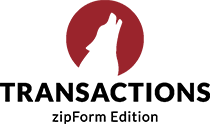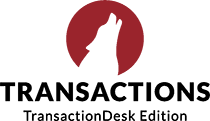
When it comes to real estate, what often makes the news are the highs—even if they aren’t always positive. We hear a lot about the highest mortgage interest rates in a generation, the average length of time a house spends on the market going up, and more.
But from inside the industry, we can see another factor on the rise: expectations are higher than ever, whether they be for professionals themselves, for the performance of listings and properties on the market, or otherwise.
We discussed this and more last week at our webinar, hosted by Jake Hamilton, Lone Wolf’s senior vice president of strategy. If you couldn’t attend, keep scrolling for the quick recap—and you can find the full recording here.
Why does real estate face such high expectations?
Real estate professionals still, even now, are dealing every day with market trends that make their work more complicated. This includes factors such as a continuing lack of inventory, fluctuating interest rates, and more—all of which dissuade buyers and sellers alike out of the market. On top of everything else they do; real estate professionals have to give clients the confidence to enter the market.
In fact, according to data from the National Association of REALTORS®, the typical agent these days earns 27% of their business from repeat clients, and 24% through referrals from past clients. That means that collectively, the average REALTOR® earns more than half of their business from the impressions they make on consumers.
Those consumers carry expectations they have from other industries over, favoring personalized experiences, with a strong 71% of consumers expecting the businesses they interact with to provide personalized experiences, and 76% of consumers stating they feel frustrated when this expectation goes unmet.
This expectation in particular impacts real estate professionals, who are already working in a notorious high-touch industry, where they rely on positive impressions from their clients to grow. But real estate professionals also face the requirements of an increasingly digital world, where consumers have high standards for their digital experience.
Over the years, the number of consumers who searched for homes online has grown drastically, and last year, the National Association of REALTORS® reported that all home buyers used the internet in their search. On top of that, buyers are looking at more homes exclusively online, cutting out the in-person side of it for those listings. Specifically, buyers looked at about seven homes, along with four only viewed online.
The challenge may not lie in any single factor, but instead, in striking the right balance between all factors.
So, how do you deliver?
Well, so far, the answer has been piecemeal.
In a Lone Wolf study done in partnership with T3 Sixty late in 2023, we discovered that on average, brokerages use over 20 different pieces of software in their businesses. Whether we’re talking about brokers, admins, or associated agents, this doesn’t mean just pieces of software—that’s unique apps, usernames, passwords, and storage to remember where a specific detail might live. Even with integrations, real estate professionals still end up with gaps in the process, which ends up costing them time to solve. And all of that doesn’t take into consideration the fact that many real estate agents will bring their favorite software to any new brokerage they join.
The bottom line: There is too much software out there in real estate.
This might be a strange stance, coming from a real estate software company, but we see the same things that you do—and see that, as an industry, real estate is rapidly approaching a point where much of the new software being introduced claims to make work simpler, but just makes work different. The result: this work still takes up real estate professional’s’ time, but in different ways than it did before—and with the added caveat of learning how to engage with an unfamiliar program or process.
The people of real estate are expected to deliver more, so it follows that they then need more from the software they use every day.
We’ve been asking ourselves: what does “more” look like?
Our answer: Lone Wolf Foundation.
As Jake Hamilton put it:
“Lone Wolf Foundation is about stepping back, looking at our suite of products, and saying ‘how can we take a bunch of things that have value, deliver value, and can be great on their own—and make the whole greater than the sum of the parts?’”
It looks like software that works harder, so real estate professionals don’t have to. It looks like more comprehensive bridges between solutions, so the data that agents, admins, and brokers alike need can transport itself automatically. It looks like proper platforms, systems of software brought together in a bigger way so real estate professionals don’t have to worry about how they’re going to bridge the gaps in their processes.
It looks like all of your Lone Wolf solutions brought together, under a single login, for a consistent user experience: One dashboard, one workflow, one navigation, one login, one data set, and one partner that really meets your needs.
What’s next?
Discover more from Lone Wolf, stay tuned for further announcements, and don’t forget to tune into the full webinar recording to learn more.


